Added 1 new A* page:A large flat package waiting on my porch today pretty much made my day because it turned out to be an item from A*'s Amazon Wish List that a very kind reader had sent to me—they even had it gift-wrapped! =o I've learned that not everyone wants their name given to the internet at large, so I'll just say thank you very much, lovely reader. :)
And I'll share! Because this isn't just any book, but the very large and colorful Definitive Flash Gordon and Jungle Jim Volume 1, which begins the task of collecting all of Alex Raymond's Flash Gordon and Jungle Jim newspaper strips; volume 1 starts with the very first strips for each series, which debuted in 1934, and gets as far as 1936 with them.
It's a large book—16 inches high! (Amazon appears to have the dimensions all wrong. And did you know that 16" is the width of a cropped-for-the-web A* illustration? Hm!) And hardcover, but not sporting one of those annoying dust jacket things over blank cardboard covers; no, this has some wacky and highly colorful graphics on it, unhelpfully blocked here by some photo-bombing doofus' hand:
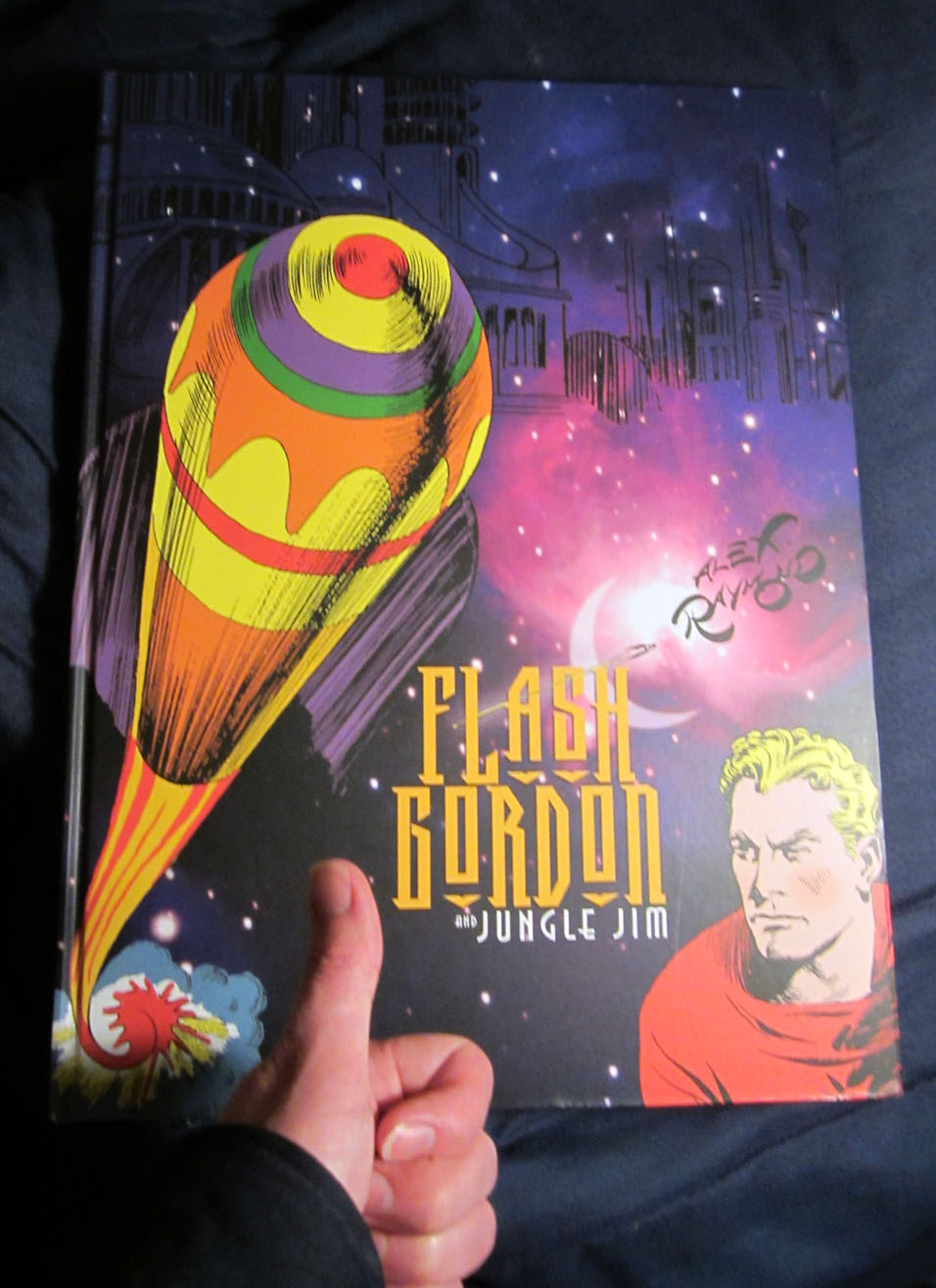
Jungle Jim was a "topper" for Flash Gordon, meaning it ran above it on the comics page when the strips came out every Sunday. Jim was meant to ape (har) the success of the Hal Foster-illustrated Tarzan, based on Edgar Rice Burroughs' immensely popular pulp adventure series, and already incredibly popular in its own right. Flash, meanwhile, was meant to compete with the immensely popular sci-fi strip Buck Rogers; interestingly, both Tarzan and Buck had begun on the same day: January 7, 1929.
Well, Raymond's Jungle Jim and Flash Gordon hit the funny pages exactly five years later, on January 7th, 1934. Here's the first strips, and you can see their "topper" layout:
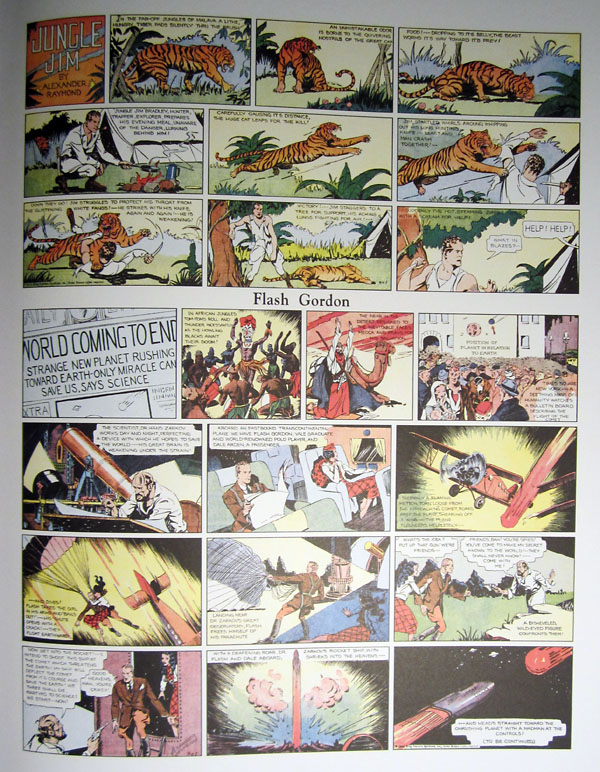
The intro to the book has a lot of interesting info about the strips; that first Flash comic, for instance, was Raymond's third try; the first two, rejected by the syndicate, had Flash as part of a four-man crew whose ship, designed to be the first to orbit the Earth, had malfunctioned, leaving them stranded in space. It was more sciencey and less fantasy, apparently; but the editor finally went for this third try, which included such crowd-pleasers as an impending apocalypse, a mad scientist, and a beautiful young woman in distress—all in one Sunday page!
For a period in '35, it was decided to run the funnies in a "tabloid-style" insert, and both Jim and Flash got their own full page; you can see that already, just one year later, Raymond's art has become much more polished, graceful, and dynamic, and he's moved to working in fewer, larger panels; Jim, though, is noticeably lower detail than Flash—you can even see some quicky dry brush work in Jim's shading:
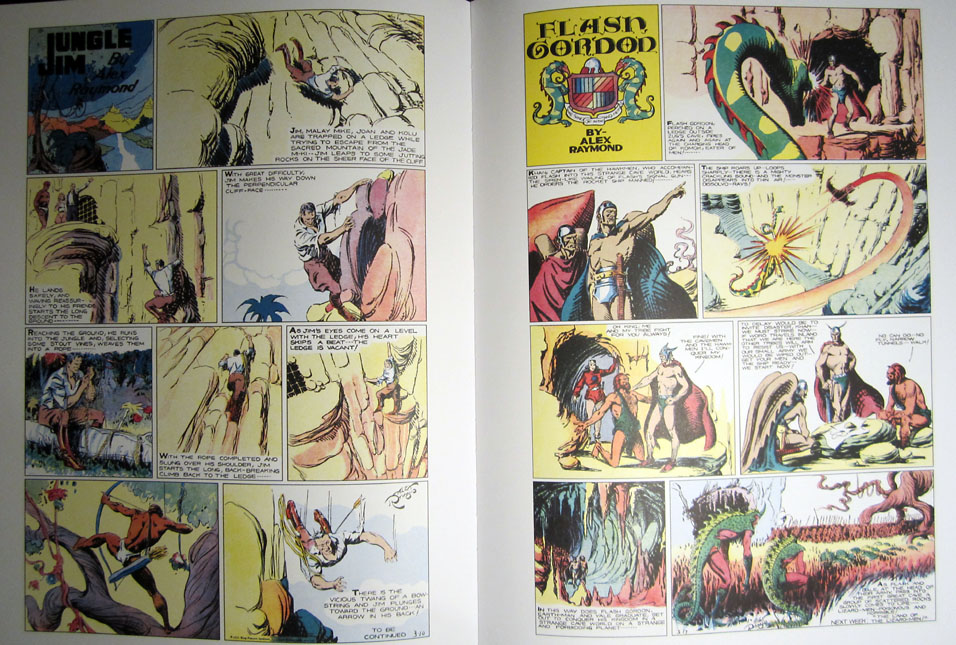
Raymond, incidentally, did not usually handle the coloring of the strip. He was no newcomer to comic drawing, however: the book's introduction tells how he got his break in 1931, when at the age of 22 he began assisting neighbor Russell Westover on Westover's Tillie the Toiler comic strip; and it really was a break for the newly married Raymond, whose job at a Wall Street brokerage firm—he'd turned down a Notre Dame football scholarship after the death of his father in 1922 to work on Wall Street and help support the rest of his family, which included six other siblings—had dissolved shortly after the stock market crash in '29. Westover's syndication connection got the otherwise self-taught Raymond a job at the King Features syndicate's art department, from which he was eventually hired as assistant by Chic Young, creator of the fledgling strip Blondie. Chic's brother Lyman also had a strip—Tim Tyler's Luck—which by '33 Raymond was ghost-illustrating in eye-catching fashion, a fact that hardly escaped the eyes of the ambitious King Features editors.
Anyway, skipping back ahead to Flash, by March 1936 it was back to its initial configuration with Jim as the topper, and you can see also that Raymond's style was well on its way to the intricate patterns of curving, space-and-light-defining lines for which his Flash work would be most known:
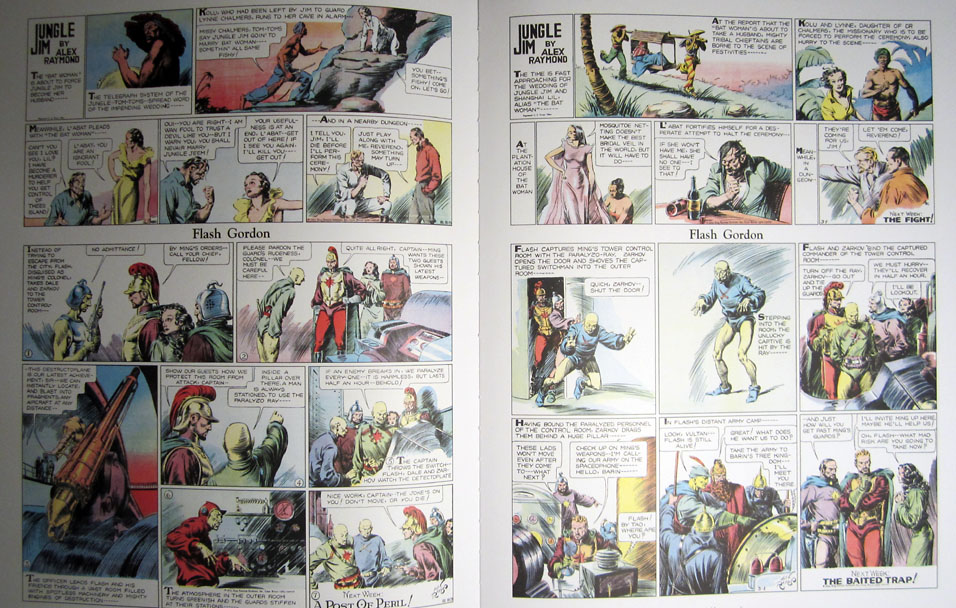
So as a comparison, here are a couple panels from the bottom left of a Flash strip from May 20th, 1934
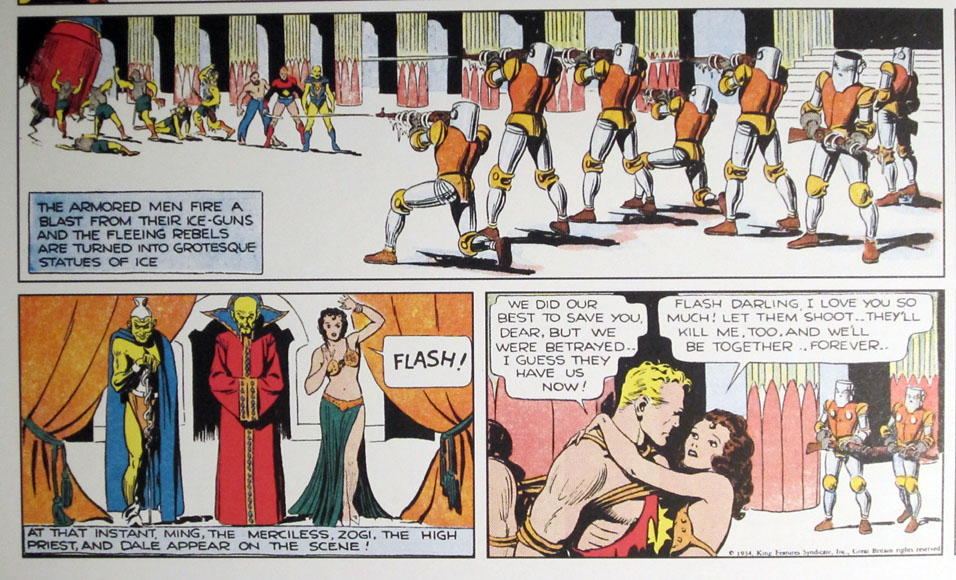
vs a couple from the bottom left of the last strip in Volume 1, from just over two years later—May 31st, 1936:
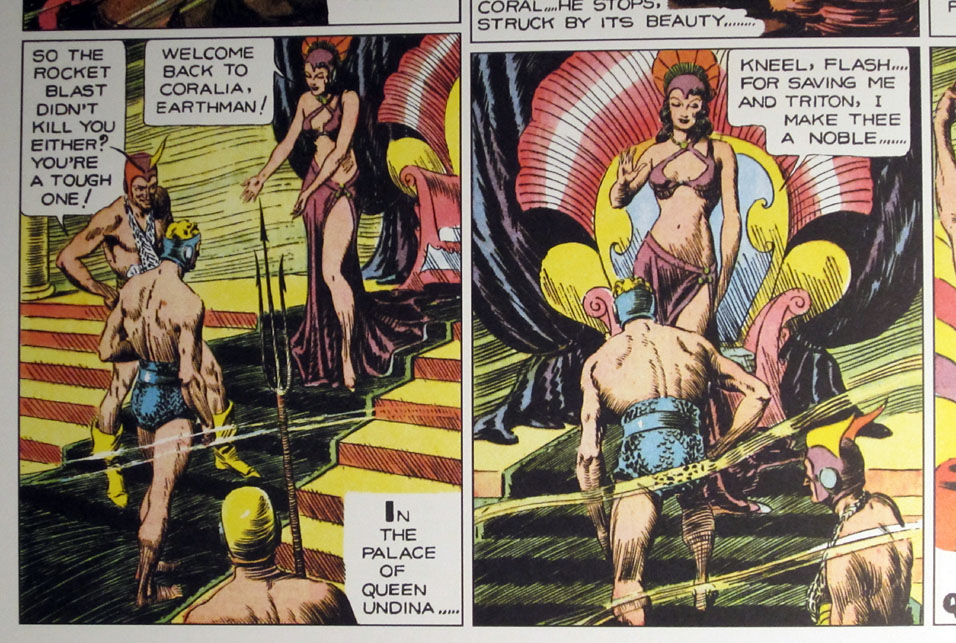
Just look at that print quality, too. This is a really lovely book!
Bonus factoids! Raymond had also been given a THIRD strip: Secret Agent X-9 was to be the big one; written by Dashiell Hammett, famed hard-boiled crime story writer of The Maltese Falcon (Sam Spade and all that, you know), X-9 was set to steal some of the thunder (so creative they were at King Features back then :P) of the very popular Dick Tracy comic strip, which had begun on October 4th, 1931. Raymond stopped working on it in '35, and Hammett didn't stay long, either; X-9 went on under various creators and names, though—it was renamed "Secret Agent Corrigan" in later decades—and didn't stop until 1996! I wonder if I ever saw it in a paper... Can't say I remember it! Another interesting factoid: Al Williamson illustrated Corrigan in the '70's; Williamson had also been an assistant on the strip Raymond started after WWII, Rip Kirby, AND had done later Flash Gordon illustration work—you can see some nice examples of both his Corrigan and Flash work on that Wikipedia page I've linked there. And incidentally, Williamson had also collaborated on comic work with another inspiring artist I've happened to mention more than a few times, Frank Frazetta.
UPDATE: I talk about volume 2 of this Flash compilation series here.
|
